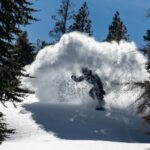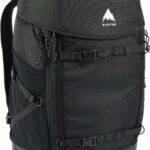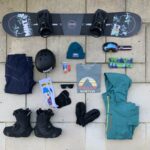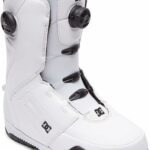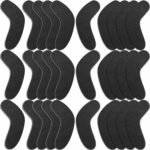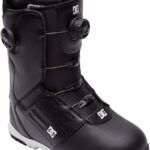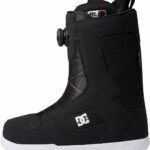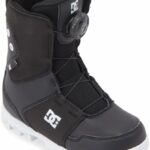Imagine this: you’re heading out to conquer the icy slopes, the cool mountain breeze bristling past your face as you cut through the fresh white powder. You are excited about the snowboarding trip but confronted with the daunting task of packing. As easy as it may sound, packing for a snowboarding trip can be somewhat tricky: navigating the balance between what you need for warmth and safety and what just weighs you down. This article elucidates practical tips on what to take with you on this mountainous adventure, keeping you prepared while ensuring you’re not dragging an unnecessary load.
Understanding the Basics of a Snowboarding Trip
So, you’re planning a snowboarding trip? That’s exciting! But, as you know, a successful trip requires good preparation. Before you start packing your bags and equipment, there are a few things you should consider.
Knowing Your Destination
First off, it’s essential to know where you’re going. Understand the specific conditions and culture of your destination. For instance, if you’re heading to a popular mountain resort, the atmosphere may be different from a less-trodden snowy path. Each location will have its unique aspects which will affect what you need to bring along.
Checking the Weather and Snow Conditions
The weather plays a significant role in how you prepare for a snowboarding trip. Therefore, it’s worth checking the weather forecast for your destination. This will help you understand what kind of clothing, gear and accessories you’ll need. Also, be sure to check the snow conditions. The type of snow can influence your choice of snowboard and the kind of wax you use.
Planning Your Itinerary
Once you know where and when you’re going, you should plot out your itinerary. This includes your transport plans, accommodation, and even dining options. Knowing this in advance can help you prepare for any situation that might arise.
Choosing the Right Snowboarding Clothes
Dressing appropriately for a snowboarding trip is quite an art. It involves getting the balance between warmth, mobility, and safety.
Snowboarding Jackets and Pants
For outerwear, focus on clothing that is waterproof, windproof, and insulated. Snowboarding jackets and pants come in many styles and designs, but ensure they provide the protection you need against the elements.
Thermal and Breathable Layers
Underneath your outer clothing, layering is key. Your base layer should be thermal to keep you warm, yet breathable enough to wick away sweat. Merino wool or synthetic materials work well for this.
Gloves and Mittens
Your hands need protection too. Choose gloves or mittens that are waterproof and insulated. You can opt for gloves with added extra features like touchscreen compatibility or built-in wrist guards.
Snowboarding Socks
Invest in good quality snowboarding socks. They should be thick and warm, as well as moisture-wicking. Avoid cotton as it retains moisture and can lead to cold feet.
Eye and Face Protection
Finally, don’t forget about your face and eyes. A balaclava or neck warmer will guard against windburn and frostbite. And a good pair of UV-protective goggles will keep your peepers safe against snow glare and falling flakes.
Packing the Essential Snowboarding Gear
Of course, a snowboarding trip would be nothing without your sports equipment.
Snowboard and Bindings
Your choice of snowboard and bindings will depend on your skill level and the conditions of your destination. If you’re unsure, consider getting advice from experienced snowboarders or professionals.
Snowboarding Boots
You need to prioritize comfort and fit when it comes to snowboarding boots. They should also match your bindings and riding style. Break them in before your trip to avoid discomfort on the slopes.
Snowboarding Helmet
Safety first! A proper fitting helmet is not just a recommendation, but a necessity. The helmet should be specifically meant for snowboarding or skiing.
Goggles
We’ve mentioned this before, but remember to pack your goggles! They are essential gear for your snowboarding trip, providing eye protection from the sun, snow, and wind.
Safety Pads
Extra safety never hurts. Consider packing safety pads, especially if you’re a beginner. These include knee pads, elbow pads, and tailbone protectors.
Selecting Additional Snowboarding Accessories
Now that we’ve covered the basics, let’s talk about those additional accessories that can make your trip even better.
Snowboarding Bags and Backpacks
A durable, versatile snowboarding bag or backpack is a must. It should be large enough to hold your gear and robust enough to withstand bumps and knocks.
Tool Kit for Snowboarding
A small tool kit can be a lifesaver on the slopes. This should include a snowboard multi-tool, binding screws, and perhaps some duct tape for any quick repairs.
Hydration Pack and Snacks
Staying hydrated is key to maintaining your energy levels on the slopes. If you can, pack a hydration pack. Also, bring some easy-to-carry snacks like energy bars for refueling on as needed.
Wearable Cameras
A wearable camera, like a GoPro, can help you document your snowy adventure. Be sure to pack any accompanying mounts or accessories for it.
Spare Parts
It’s always a smart idea to pack some spare parts for your snowboard. This could include additional binding straps or buckles.
Organizing Personal Health and Hygiene Items
Your personal health and hygiene are just as important when you’re on a frosty mountain as when you’re at home.
Sunscreen and Lip Balm
Even in the winter, the sun’s rays can be damaging, especially since they reflect off the white snow. Always slather on ample high SPF sunscreen and keep your lips protected with a moisturising SPF lip balm.
First Aid Kit
A basic first aid kit is an essential item for any trip. Include items for wound care, pain relief, and any personal medication you require.
Toiletries
Don’t forget about your daily hygiene. Pack travel-sized items like toothpaste, shower gel, shampoo, and deodorant.
Prescription Medications
If you have any regular prescription medications, ensure you bring enough for the duration of your trip, plus a bit extra in case of delays.
Personal Hygiene Tools
Pack items like travel-sized toothbrushes, deodorant, and hairbrushes. Wet wipes can be useful for freshening up on the go.
Packing for Off-Snow Activities
Remember, you won’t spend all your time on the slopes. Plan and pack for your off-snow activities as well.
Comfortable Clothes
Pack comfortable clothes for relaxing in the evenings. These should be warm and snug, but not as heavy-duty as your snowboarding attire.
Casual Footwear
Snow boots are great for the mountains, but you’ll be relieved to swap them for lighter, more comfortable footwear when you’re not snowboarding.
Entertainment Items
Bring small entertainment items like books, cards, or portable games. They can help to fill downtime, especially on bad weather days.
Workout and Leisure Clothes
In case your accommodation has a gym, or there’s a yoga class you want to try out, pack a few workout clothes.
Swimsuit if Necessary
If you’re lucky enough to have a hot tub or heated pool at your accommodation, don’t forget your swimsuit!
Preparing Electronic Devices and Chargers
You’ll likely want to stay connected even while you’re away, so remember to pack everything you’ll need to keep your gadgets going.
Mobile Phone and Charger
Your phone is key for staying in touch and taking quick snaps, so don’t forget the charger!
Camera and Accessories
If you’re using a dedicated camera, stock up on extra film or memory cards. Also, don’t forget your camera charger.
Portable Charger
A portable charger or power bank is a life-saver when your battery is dying, and you’re nowhere near a power outlet.
Power Adapters if Needed
If you’re traveling to a different country, you’ll need a power adapter to plug in your chargers and other electronic devices.
Extra Batteries
Finally, it’s always worth packing a few extra batteries. They can be used in a pinch for any battery-operated devices.
Keeping Important Travel Documents
Your travel documents are critical. Be sure to gather and store these securely well before your departure.
Identification Documents
Your driver’s license or any other form of ill identification needs to be on you at all times. Always have a backup photocopy, too.
Passport and Visa if Necessary
If you’re heading overseas, ensure your passport has at least six months of validity remaining. If you require a visa for your destination, have this sorted well in advance.
Flight and Hotel Booking Receipts
Whether they’re digital or paper, remember to organize and pack all your travel and accommodation confirmation receipts.
Transportation Tickets
If you’re planning to travel by train or bus during your trip, confirm all your tickets and keep them in an accessible place.
Insurance Documents
Whether you have travel insurance or special sports coverage, have copies of your insurance policies handy.
Planning for Emergency Situations
No one likes to think about emergencies arising, but it’s always best to be prepared.
Emergency Contact Information
Always have your emergency contact numbers on hand. These should include both your local contacts and your contacts back home.
Emergency Food Supply
An emergency stash of food, such as energy bars or dried fruit, can come in handy if you’re ever stranded or stuck.
Survival Tools
Pack essential survival tools such as a compact flashlight, whistle, and multi-tool.
Emergency Cash and Cards
Always have a stash of emergency cash, and it’s useful to have a backup credit or debit card stored separately from your wallet.
Backup Copies of Important Documents
Consider having photocopies or electronic copies of all your essential documents, like your passport, travel insurance policy, and emergency contact information.
Review and Double Check the Packed Items
Finally, before you set off, do a final review and double-check of everything you’ve packed.
Checking Snowboarding Gear
Ensure your snowboarding gear is in good working order and nothing has been forgotten.
Verifying Personal Items
Double-check your toiletries, clothes, and personal items. Make sure you’ve packed all the essentials.
Inspecting Travel Documents
Review your travel documents one last time. Make sure your passport, insurance documents, and everything else is where it should be.
Ensuring Emergency Plans
Confirm that your emergency plans and contacts are in place and known to those who need to be aware.
Rechecking the Bags before Leaving
Finally, give your bags a final check before you leave. You’ll want to ensure you haven’t left anything behind.
Now that you’ve ticked off everything on the list, you’re ready to go! Enjoy your snowboarding trip knowing that you’ve prepared thoroughly. Have a great adventure!
- What Snowboard Bindings Should I Get? - January 23, 2024
- What Size Screws For Snowboard Bindings? - January 23, 2024
- How To Snowmobile On Water? - January 23, 2024

